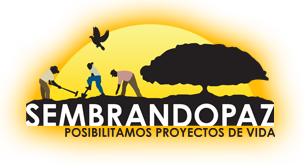Teams of youth from the Vigias Ecologicos (Environmental Protectors) walked along, and in, the Palenquillo from its source in the High Mountains of El Carmen de Bolivar all the way to the Caribbean Sea. Why? To document the state of this important stream that runs through dozens of farming communities, to see firsthand the impact of human activities on this water source, and to discover their territory that was off-limits in previous years to the armed conflict in the region. In the process, they learned new skills (like using a GPS, keeping field notes, and using Google maps), strengthened their bonds with each other, and did their little piece to re-build the social fabric of the area by inviting local villagers to accompany them for stretches of the walk.
On the river walk, the youth marvelled at huge trees, monkeys, iguanas, and birds, only to further downstream see the terrible destruction of the environment due to deforestation, overgrazing, erosion, and contamination from garbage, sewage, and agricultural chemicals. All along the walk they clicked on their GPS, took field notes on what they were seeing, documented with photographs and videos, For these peasant youth, who had never used a GPS or traveled far beyond their rural communities, this was both an adventure and revelation.
In the armed conflict in Montes de Maria, and indeed in the rest of Colombia, one of the invisible victims was the social fabric of the region. Because the guerrillas, military, and paramilitaries had certain areas that they dominated the farming communities in those areas were unfairly labeled and stigmatized. Neighboring villages were pit against each other and locals talk about ‘the invisible line’ in the High Mountains that no one crossed. Thus, the social fabric was ripped apart. People did not do something as simple and natural as visit another village because it was too dangerous.
Now that the government and FARC guerrillas have signed a peace accord, putting an end to 53 years of war, people who never left their villages are now free to travel. And yet, it is not as simple as that. The social fabric torn by violence, fear, and mistrust, has left deep wounds and is slow to rebuild.
Therefore, while the work of the Ecological Protectors may seem exclusively environmental, the truth is it is as much about peacebuilding as it is about nature. In order to carry out the river walk, the youth had to meet with each one of the communities the stream passes through- to introduce themselves and the mission of the Ecological Protectors, to ask for support in terms of paid food and lodging when they would need to stay in a village, and to invite locals to walk with them or act as guides. These small steps, as insignificant as they may seem, build bonds of friendship and nurture the communities once so divided by war.
The last 28 km of the walk was financed by the Lisle Foundation to whom the youth and Sembrandopaz are extremely grateful.







Leave a comment